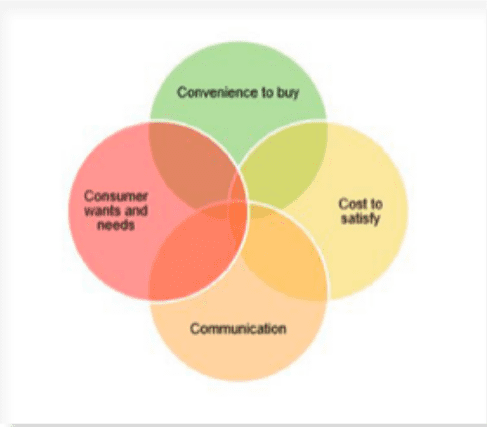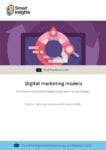Introducing Lauterborn's 4Cs - a variant on the 4Ps
Planning models can be useful ways to structure your thinking when creating marketing plans. They can bring clarity to opaque problems and help you build and effective plan. Because of this we, are outlining 10 of the most effective digital marketing models to help you plan, manage and optimise your marketing. Next up, it's one you may not of heard of, but is related to a model you will have heard of.
What is Lauterborn's 4Cs?
In 1990 Bob Lauterborn wrote an article in Advertising Age saying how the “4Ps were dead” (an early example of clickbait?) and “today’s marketer needed to address the real issues”. He didn’t address the 7Ps which include the service elements of the Marketing Mix model. Instead he suggested a 4C model which gives a more customer-centric take on the traditional marketing mix mapping to the 4Ps of the Marketing Mix like so:
- Consumer wants and needs - corresponding to Product in the Marketing Mix
- Cost to satisfy - corresponding to Price
- Convenience to buy - corresponding to Place
- Communication - equivalent to Promotion

What do the 4Cs mean?
Consumer wants and needs
‘Consumer wants and needs’ moves the focus from ‘product’ and being product-led, with companies making things customers didn’t want. An example of this is Nokia, making lots of products, but failing to satisfy changing consumer needs and wants. The 4Cs also reminds us of the need to link the 4Ps to specific audience types through different market segment options to target.
Cost to satisfy
The second ‘C’ is ‘Cost to satisfy’, designed to replace ‘price’, as Lauterborn stated this was irrelevant as so many other factors were involved. This is interesting if you consider commodity goods, such as non-brand purchases from supermarkets, where supermarket buyers are forcing down the price they pay with their suppliers. This is likely to be a contributory reason why horse meat was introduced into ready meals – suppliers having to provide a ‘cost to satisfy’ buyers.
The challenge for me with this is the perception of the terms ‘cost to satisfy’ with a company like Apple. The ‘cost to satisfy’ sounds more like a lower price offer and Apple products are premium-priced. Perhaps that’s the key, as the cost to satisfy, for a brand like Apple, has to be higher than the competitors, to contribute towards the brand’s DNA as a premium brand. That price is managed by the brand, to ensure discounting does not take place.
Convenience to buy
The third ‘C’ is ‘Convenience to buy’ and admittedly, the ‘P’ for ‘Place’ always felt tenuous as it’s really about access to the product and the letter ‘P’ worked in the alliterative set! Convenience to buy is an interesting concept as we live in a 24/7 always-on world. The concept of shopping from
The concept of shopping from 9am to 5pm, has gone. Although it’s not that long ago (perhaps 15 years) that I remember working in Italy and the shops closed during lunch hours too. And this included supermarkets – imagine the scene – you arrive at the supermarket at 12.45pm and at 1pm you haven’t completed your transaction, so you literally abandon your shopping trolley, in the store! Today trolley or cart abandonment is more likely to take place in the online world. Added to this, the development of disintermediation – giving shoppers the chance to remove the middle man and buy direct, as well as re-intermediation – the 'middle men' re-inventing themselves online, as Expedia has done (aggregating holiday offers in one place) or Skyscanner (all your flights for specific dates in one place) or the UK insurance broker ‘Compare the Market’ (bringing many car insurance policies to one screen, making it easier to compare). The advent of wearables takes the concept of buying ‘any place, anytime, anyhow’ to another level.
Communication
The final ‘C’ in Lauterborn’s 4Cs collection is communication. Lauterborn viewed ‘promotion’ as manipulative and described it as a one-way system with communications pushed from company to consumer. His view of communication was that it should be about dialogue, a two-way conversation, between company and customer - an approached that has evolved as digital marketing has grown. Applying this in a digital sense, we can see customers creating communications through User Generated Content, so perhaps Lauterborn’s comments were an early insight into the changing nature of customer communication.
Applying the 4Cs
To get the benefits of the 4Cs model you will need to apply it to your business. Our Digital marketing models guide goes into great detail on how to apply the 4Cs, and it's free to all members. So sign up today to download.
Download free, Basic member resource – Digital Marketing Models Guide
This new guide, published in 2016 lists 10 models that can be used by marketing professionals and students for digital audits, planning and strategy.
Access the Digital marketing models guide









